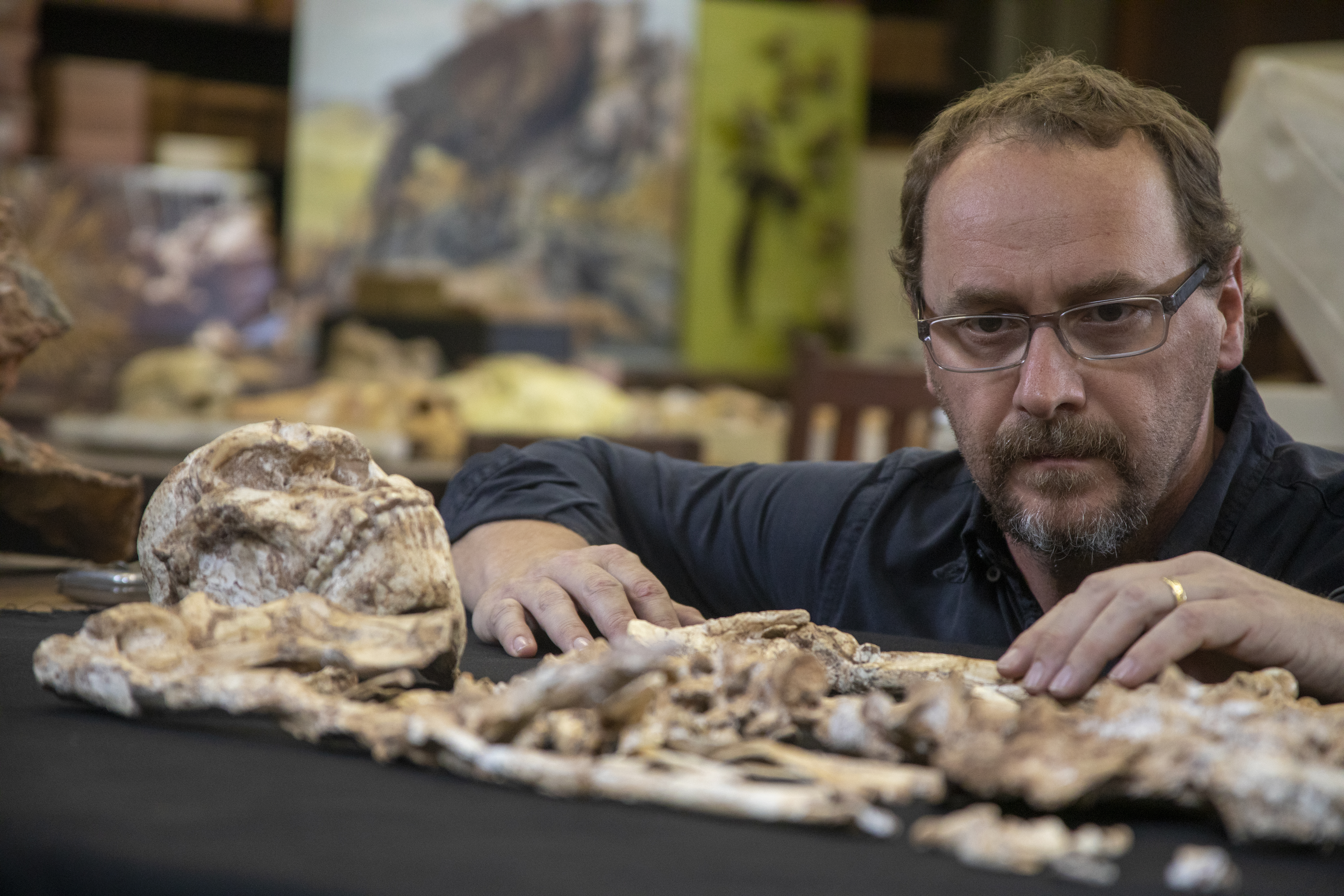New ape-man skeleton sheds light on the evolution of humans
New ape-man skeleton sheds light on the evolution of humans
For Immediate Release
Jul. 8, 2019

BIRMINGHAM, AL – An international team of scientists have published the first descriptions and analyses of the arm and leg bones of a nearly complete early human skeleton from Sterkfontein, South Africa.
“Little Foot,” as it has been nicknamed, belongs to an early human group called Australopithecus, which like us – its descendants - moved about the landscape upright, on its two legs. This mode of locomotion, or moving, is frequently used as the distinguishing trait which separates our lineage from that of modern apes.
As Australopithecus spread throughout Africa, one question remained: how much did movement in the trees continue to play a role in the day-to-day lives of our ancestors and their fossil relatives?
Lead scientist Jason Heaton, associate professor of biology at Birmingham-Southern College in Birmingham, AL, said, “Because of its completeness, ‘Little Foot’ will allow us to test hypotheses about the behavior of these early groups in ways that have been difficult to do to date.”
For their analysis, Heaton and his colleagues focused on describing the anatomy of the upper (i.e., arm and forearm) and lower (i.e., thigh and leg) limbs of “Little Foot”, as well as the proportions of those bones relative to one another.
The anatomy and proportion of these limbs are used as clues to how an animal moves. Primates that spend more time moving through trees, like modern gibbons, possess longer upper limbs relative to their lower limbs.
Compared to chimpanzees, our closest living relatives, StW 573 possessed a relatively shortened forearm but lengthened thigh (femur) and leg (tibia) bones. Heaton notes that “Broadly, these proportions are indicative of an individual that spent less time in the trees than modern chimpanzees and regularly moved around bipedally, or on two feet.”
This conclusion is additionally supported by combinations of features observed in the individual limb bones as well. For example, the knee is placed more directly beneath the pelvis for improved balance than in animals that walk on four feet. In contrast, muscle attachments and other features of the arm are suggestive of an individual still using climbing or suspension, as part of its behavioral repertoire.
However, Heaton explains, “The degree to which the limb proportions and anatomy of ‘Little Foot’ deviate from that of chimpanzees may be more of a reflection of the latter’s evolution, since our shared ancestor.” Currently, analyses are being extended to other parts of the StW 573 skeleton which should help clarify if its arboreal traits were reflective of current use or merely primitive retentions.
Part of a special issue devoted to “Little Foot,” the study, entitled “The long limb bones of the StW 573 Australopithecus skeleton from Sterkfontein Member 2: Descriptions and proportions” was published online July 4 in the Journal of Human Evolution.
Media contact: Amy Bickers, Director of Communications, (205) 226-4919 or [email protected]
About Birmingham-Southern College
Birmingham-Southern College is a selective residential liberal arts college enrolling approximately 1,300 undergraduate students. BSC is included in Pope’s Colleges that Change Lives and is a sheltering institution for Phi Beta Kappa. The college’s curriculum is based on close faculty-student interaction in teaching, advising, and research. For more on the college’s faculty, students, educational mission, and national reputation visit www.bsc.edu.

